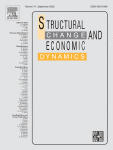
The changing drivers of inflation - the case of food: macroeconomics, speculation, climate change and war
Bernardina, Algieri / Lukas Kornher / Joachim von BraunExterne Publikationen (2025)
in: Structural Change and Economic Dynamics 75, 782-800
DOI: https://doi.org/10.1016/j.strueco.2025.10.006
Open access
The inflation surge in recent years has produced profound social, economic, and political consequences. Food price changes, being part of inflation, affect low-income segments particularly strongly. This is important to consider because macro-economic and central banks’ attention is mainly on core inflation, which excludes food. What makes this period so unusual is the breadth of price pressures that involve both developing and rich countries, meaning that inflation has been getting more synchronized across borders. This study examines the driving factors behind global food price hikes and their rates of change. Our analysis reveals that a complex mix of causes has led to the soaring food prices in 2021-2022. The spread of COVID-19 produced disruptions in the world’s supply chains, pushing the cost of producing and transporting food upward. The increase in fertilizer and energy prices has further exacerbated production costs for agricultural products. Adverse climatic phenomena (La Niña), generating droughts in parts of Africa, Asia, and the Americas, caused damage to harvests and fueled inflation. The war in Ukraine and the trade blockade of grain exports made things worse. Additional culprits were speculative activities in financial markets that were already underway before the Russia-Ukraine war. Soaring inflation is increasing inequality and making vulnerable countries hungrier and poorer. At the same time, since global factors contribute to food price movements, implying that a crucial component of price inflation is exogenous to individual countries, the effectiveness of national monetary and fiscal policies could be limited. Instead, enhanced cooperation among nations with coordinated policy responses could be important to avoid the exacerbation of prices.
